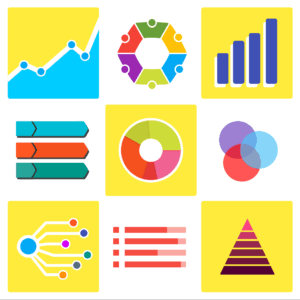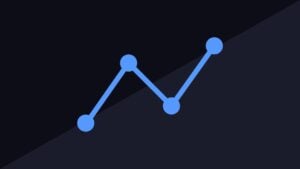Data Collaboration is Key
For many in the data science community, communication is a significant factor to consider in terms of best practices, both within the team and extending out to cross-departmental initiatives. Making sure to engage stakeholders should be a standard commitment for the data and analytics practice.
As June Dershewitz, Co-Founder, InvestInData, puts it, “One of the core themes is being mindful of the collaboration that the data team has with the rest of the business and to make sure that that is a bidirectional conversation. A lot of times I hear people in my field talk about their work not being understood or not being valued. Or the business side indicating, ‘I don’t know what that data team is doing over there.’ But the more that we can approach it from both sides so that the data team is clearly articulating what they’re doing, highlighting what’s going well, expressing what their challenges are—then we’re collaborating with the business to make sure that they’re solving the data-driven problems that the business finds important.”
Su-Feng Kuo, Sr. Director, Global Clients Insights & Analytics at Visa, also brings up a key point that she feels will be valuable in the present (and future) of the profession in terms of best practices: Data collaboration.
“How we leverage data from different sources and different types of data will be key right now and into the future,” says Kuo. “I really see a huge potential in the area, and I have seen some companies doing well with this. But I feel that’s the area we can do more and do better as well. Because we have so many clients, and they have so many different kinds of data needs and capabilities, and we also have our own data that we need.”
In some industries, like finance and health care, data collaboration may be hindered, or smoothed over, by regulations and compliance issues. Kuo sees compliance as something that data science and insights professionals could very well depend on in the future.
“How can we do this in a compliant way? In every single market. Once we sort it out, I think we will really unlock a lot of potential in this market,” says Kuo.
Understanding the Consumer
Understanding the consumer, be it a media audience or a segment of retail customers, remains an important best practice in research today. That is foundational. Yet it can be challenging in a fragmented market such as media and entertainment.
“We’ll continue to want to understand our streaming and cross-platform audiences even better than we do today,” says Sara Grimaldi, VP of Audience Impact and Intelligence at Paramount. “Understanding their media behaviors, their ad receptivity, the value of multi-platform advertising, just evolving in terms of this new streaming audience, moving beyond the bigger numbers that get reported in the press, things like sign-ups or pure play analytics, into richer competitive insights and analysis, which tell us more. This allows us to better communicate to our advertisers and clients.”
“Leaders within the media research landscape today, more so than ever, are charged with translating across a variety of different platforms and media. And thus, the measurement approaches are equally fragmented,” adds Grimaldi. “That’s something that certainly, compared to even five years ago, I think the landscape is quite different. Consumers are in control of their media journey, how they consume content and media at large.”
Becoming a data strategist and aligning the work with the company’s strategies as well as providing actionable data points, is one way the business of data is transforming.
Grimaldi continues, “With the fragmentation of media and measurement, it really advances the job of a market research leader from somebody who’s dependent on maybe a few datasets into a person that’s in charge of a vast number of datasets. This concept of media research leaders becoming more of a data strategist is really something that I think a lot about. It’s not only playing with what you must work with, but ensuring accuracy across the datasets that you use, testing the reliability, the usability of those datasets, and then the final pass is being able to harmonize and make conscious decisions about the way that we use them in coordination with each other.”
Understanding Value
With media still so diverse and fragmented today, it becomes more important to measure success through a variety of frameworks and provide value to clients and partners. This is becoming a more complex task with the advent of big data, AI and the volume of data has substantially increased. Data quality and governance is key, as always. But bringing it all back home to actionable insights is a significant endeavor.
“My role is to help our customers understand the value they’re getting out of their investment with Google and YouTube and helping them understand how to use our data to make more informed decisions,” says Suraj Rajdev, Head of Data/AI, Measurement, & Analytics – Home & Consumer Services. “A lot of it is really trying to identify trends to help them get the most value out of their investment. You must think about the effectiveness side of the equation when you go into a lot of this and think about different publisher experiences. A lot of it is experimentation to complement your media mix model and ensure that you have a good understanding of what’s going on.”
He adds, “On the insights side of the equation, we’re always trying to figure out what are the next trends, how are consumers thinking about different types of categories? Are they longer purchase cycles, shorter purchase cycles? Are they more digitally native?”
Data privacy and data quality remain important factors for the future, adds Rajdev. As long as the influx of data and information remains high, that won’t change. Scaling up and having a structure in place is important for nimble organizations to develop.
“I think there’s a large amount of work that still needs to be done around privacy and helping customers get ready for a privacy-first future,” observes Rajdev. “Two things that jump out as needing support are helping privacy readiness, then having an understanding of where your data comes from. How do you utilize that data? How are you tapping into third-party data today and how do you mitigate that and put in place practices? Having the right infrastructure in place to be set up for the future.”
Video courtesy of CareerFoundry
Contributor
-

Matthew Kramer is the Digital Editor for All Things Insights & All Things Innovation. He has over 20 years of experience working in publishing and media companies, on a variety of business-to-business publications, websites and trade shows.
View all posts












































































































































































